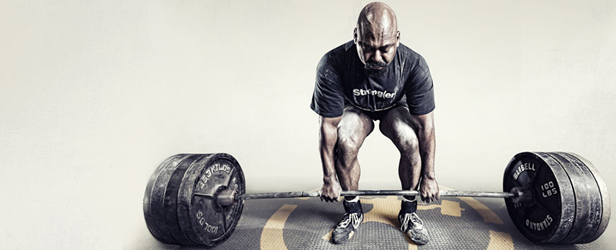
The deadlift is the one exercise that allows you to relax your muscles in between each rep—unlike the bench press and the squat when you’re doing them for reps. Most believe that it’s best to let the weight down fast and concentrate more on the positive upward motion of the lift. And I agree with the fast, positive upward motion; however, you can also train the negative downward movement to be stronger overall, and this will improve speed off the floor and help with a strong lockout.
In the squat and bench, we perform a negative movement at some time or another. Some of us attempt to use speed in the negative motion, yet even then we never release the tension on the bar. We remain tight and controlled.
Back to the deadlift...I see some lifters attempt to do what they consider a "touch and go." However, it’s more like a "bounce lift" as they bang the weights on the floor and spring up. That’s not what we want at all. One needs to be very disciplined when performing the negative movement of the deadlift. You’re only cheating yourself if you bounce it off the floor.
What we do want is to lower the bar with control, and we want to attempt to touch it lightly or set it down while keeping constant tension on the bar. This can be beneficial for building strength and for helping one's balance and control, whether you pull sumo or conventional. I also found this to be effective in building up the hamstrings. In turn, it is important to note that riding the bar hard to the floor is not good on your elbows and joints. This can cause elbow tendinitis, which can affect your squat and bench.
The only time I recommend letting the bar down hard is in competition, and even then it has to be under control and done without releasing the bar until it is back on the floor. I, myself, have a bad habit of dropping the last rep in training. However, I have never dropped a bar in competition unless I lost my grip.
A good practice to help with this would be to lower all of your last reps (in training) slower and under control. Not only will this keep you in good practice for meets, but you will also reap all of the benefits in terms of your technique. This principle can and should also be used when performing rack pulls, block pulls, and stiff leg deads.
So, as you can see, I recommend keeping the bar loaded until you are finished with the set. It is my belief that a loaded bar under constant tension builds more power and muscle. This also will keep you in the game a lot longer. NO JERKING! BOUNCING! DROPPING AND RESETTING!
Please take notice on the 750-pound set. As I pull the weight up on the first rep, I control the weight back to the floor and lightly touch, while at the same time keeping constant tension on bar. On the second rep, I set the weight all the way down while keeping constant tension on the bar.









3 Comments